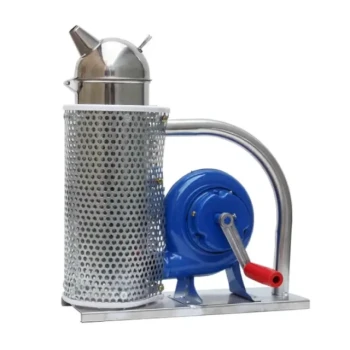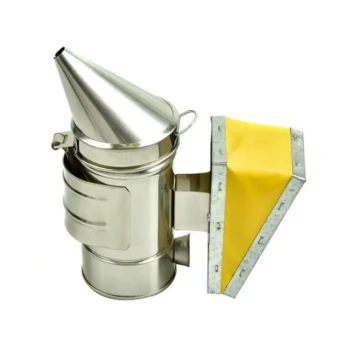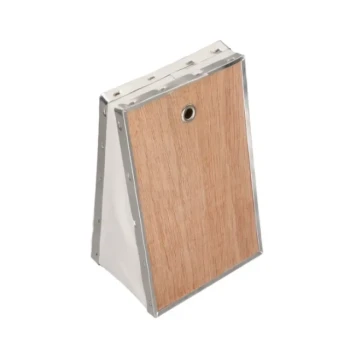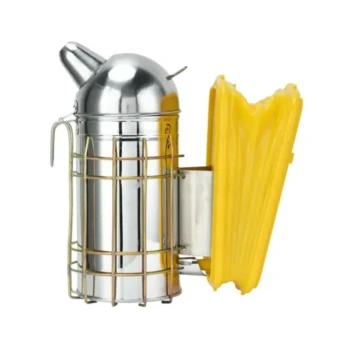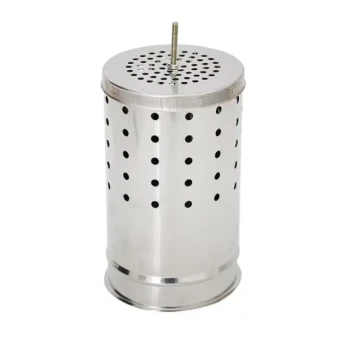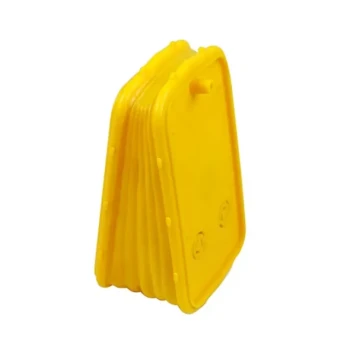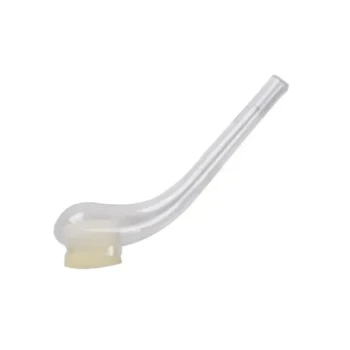To use a bee smoker effectively, the goal is moderation and proper timing. Start by producing cool, white smoke, apply a few gentle puffs at the hive entrance before opening, and then use smoke sparingly throughout your inspection only as needed to keep the bees calm.
The bee smoker is not a tool for sedation; it's a tool for communication. Effective use involves understanding that you are masking the bees' alarm signals and triggering a natural feeding response, which makes them less defensive and your inspection smoother for everyone.
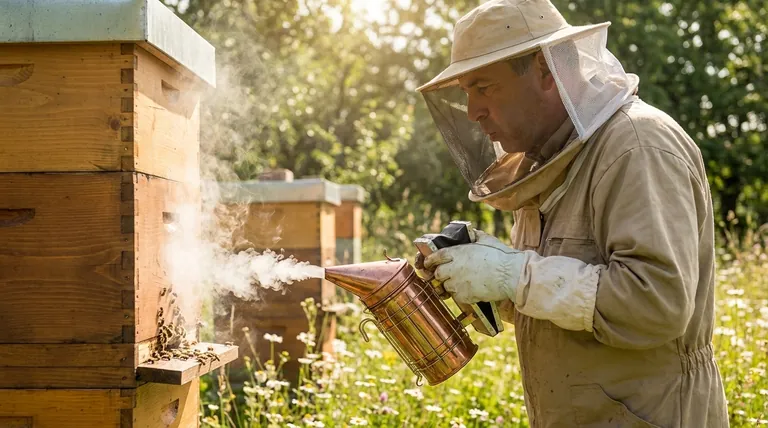
Understanding the "Why": How Smoke Affects Bees
Using a smoker correctly begins with understanding its effect on honey bee biology and behavior. The smoke is not a tranquilizer but an elegant manipulation of the colony's natural instincts.
It Masks Alarm Pheromones
When a guard bee feels threatened or stings, it releases an alarm pheromone. This scent, which smells like bananas, signals danger to the rest of the colony, putting them on high alert and increasing the chance of more stings.
Cool, white smoke effectively masks this chemical signal. It interrupts the bees' ability to communicate alarm, preventing a chain reaction of defensiveness.
It Triggers a Survival Instinct
Smoke also triggers a deeper, primal response. To bees, a large amount of smoke signals a potential forest fire threatening their home.
Their immediate instinct is not to fight, but to prepare to flee. They rush to the honeycomb and begin gorging on honey, loading up on resources in case they need to abandon the hive. A bee with a full belly is physically less able to flex its abdomen to sting and is generally more docile.
The Step-by-Step Process for Proper Use
Mastering the mechanics of the smoker ensures you can produce the right kind of smoke exactly when you need it.
Step 1: Choosing and Preparing Fuel
The best fuel is dry, natural, and free of chemicals. Good options include pine needles, burlap, untreated cotton fabric, or specialist smoker fuel pellets.
Pack the fuel chamber loosely at first to ensure good airflow, then add more substantial fuel on top. You need enough fuel to last your entire inspection to avoid refueling mid-process.
Step 2: Lighting and Establishing Cool Smoke
Light your kindling from the bottom of the smoker. Gently pump the bellows to get the fire started and producing thick, white smoke.
Before applying it to the hive, test the smoke's temperature against the back of your hand. It should be cool or lukewarm, never hot. Hot smoke or embers can burn and kill your bees.
Step 3: The Initial Application
Approach the hive and give two or three gentle puffs of smoke into the entrance. This alerts the colony to your presence and begins the process of masking pheromones.
Wait for 30 to 60 seconds before you open the hive lid. This gives the smoke time to circulate and the bees time to begin feeding on honey.
Step 4: During the Inspection
Use smoke with intention. As you remove the inner cover, apply another gentle puff across the top of the frames.
Only add more smoke if you see bees becoming agitated or lining up on the frames to fly at you. Direct puffs away from the bees, not directly at them, from a distance of at least five inches to avoid burning their wings. If you are stung, smoke the area on your suit to mask the alarm pheromone released.
Understanding the Trade-offs: Common Mistakes to Avoid
A smoker is a powerful tool, but misuse can cause more harm than good. Understanding the risks is crucial for responsible beekeeping.
The Problem of Over-smoking
Using too much smoke can agitate the colony, causing the bees to run frantically across the comb and making it difficult to find the queen. Excessive smoke can also irritate the bees' respiratory systems and potentially contaminate the flavor of your honey.
The Danger of Hot Smoke
The most immediate danger is using a smoker that is burning too hot. If you see embers or sparks coming from the nozzle, it's too hot. This can burn the bees' delicate wings, which is a death sentence. Always ensure you are producing cool, white smoke.
The Physical Hazard
The smoker itself becomes extremely hot and is a serious fire hazard. Never leave it unattended on a flammable surface like a wooden hive roof, dry grass, or the bed of your truck.
Safe Handling and Extinguishing
When not in use, place your smoker on a non-flammable surface or hang it on the side of your hive box.
To extinguish it, plug the nozzle with a cork or a clump of green grass to cut off the oxygen supply. Lay the smoker on its side on a concrete surface until it is completely cool before storing it.
Tailoring Your Approach to the Colony
Your smoking strategy should adapt to the temperament of the hive and the goals of your inspection.
- If your primary focus is a calm, established colony: Use minimal smoke. A few puffs at the entrance may be all you need, especially on a sunny day with good nectar flow.
- If your primary focus is an aggressive or unknown colony: Be more deliberate with your smoke. Apply it at the entrance and under the lid, using small puffs as needed to keep the bees from escalating their defensive response.
- If your primary focus is a quick check or feeding: You may not need smoke at all. A calm, swift action can often be completed without disturbing the colony.
Mastering your smoker is a foundational skill that transforms hive inspections from a stressful encounter into a calm, controlled, and respectful interaction.
Summary Table:
| Key Tip | Purpose | How-To |
|---|---|---|
| Produce Cool, White Smoke | Avoid burning bees; trigger feeding response. | Test smoke temperature on your hand before use. |
| Puff at Entrance First | Mask alarm pheromones; alert colony gently. | 2-3 gentle puffs, wait 30-60 seconds before opening. |
| Use Sparingly During Inspection | Maintain calm without over-smoking. | Apply small puffs only if bees show agitation. |
| Avoid Hot Smoke & Embers | Prevent wing damage and bee fatalities. | Ensure fuel burns completely to produce cool smoke. |
Ensure every hive inspection is calm and productive with the right equipment from HONESTBEE.
As a trusted supplier of beekeeping supplies and equipment for commercial apiaries and distributors, we provide the durable, reliable smokers and fuel you need to work confidently with your colonies. Our wholesale-focused operations mean you get professional-grade tools designed for frequent, effective use.
Ready to equip your operation with quality beekeeping supplies? Contact HONESTBEE today to discuss your needs and discover how our products support successful, sustainable beekeeping.
Visual Guide
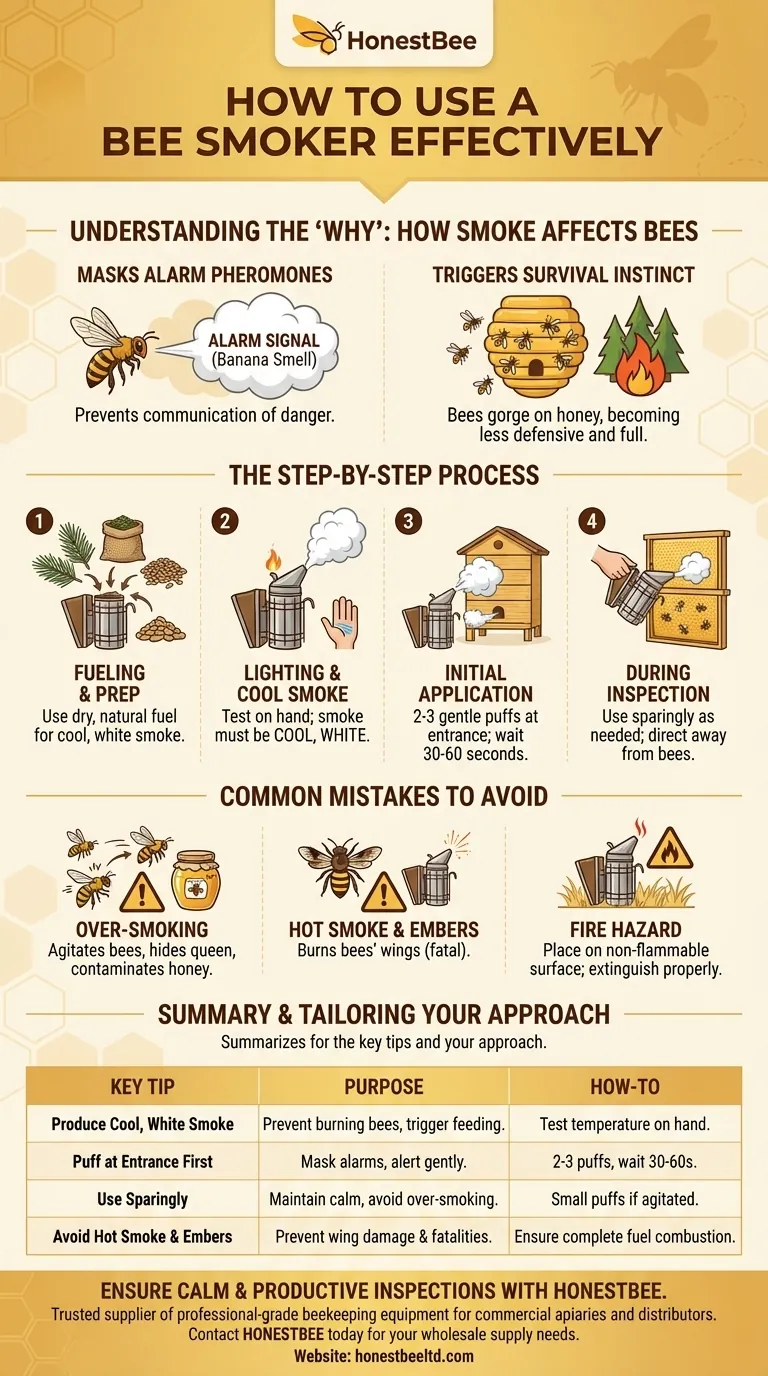
Related Products
- Premium Traditional Copper Bee Smoker with Bellows
- Stainless Steel Honey Bee Smoker Hive and Honeycomb Smoker for Beekeeping
- Stainless Steel Electric Beehive Smoker for Beekeeping and Bee Keeper Use
- European Stainless Steel Bee Smoker for Honey Bee Hive
- Economy Galvanized Beekeeping Honey Bee Smoker for Wholesale
People Also Ask
- What is the purpose of a bee smoker and how should it be used? A Guide to Calm, Safe Hive Inspections
- What are the main parts of a bee smoker? Essential Components for Calm Hive Management
- What is the primary purpose of using smoke in beekeeping? Calm Bees for Safer Hive Management
- How did early beekeepers use bee smokers? Master Ancient Bee Calming Techniques
- What are some alternatives to using smoke in beekeeping? A Guide to Gentle Hive Management







